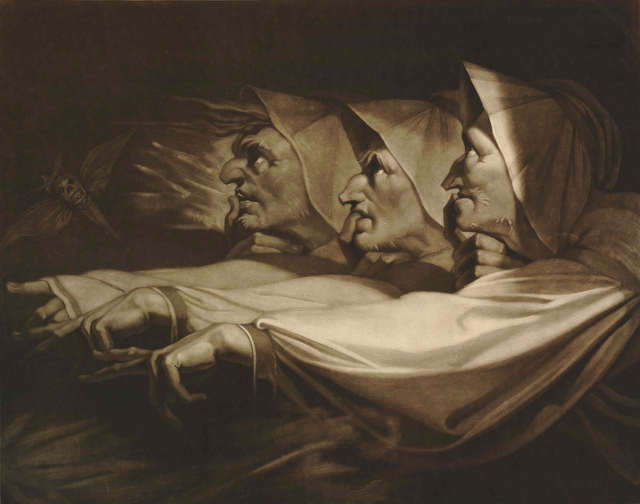Witches And Wicked Bodies At British Museum






Londonist Rating: ★★★☆☆
It's well documented that the classification of 'witch' was once used as an excuse to torture and murder innocent women. But how were these so-called conjurers and sorceresses portrayed in art? The answer can be found at Witches and Wicked Bodies — the exhibition now at the British Museum, after a successful showing in Scotland last year.
Rather than appearing as humans, the witches in this exhibition are highly caricatured. Often it's impossible to tell if subjects are female, save for their sagging and often emaciated breasts. Many witches owe their inspiration to infamous historical figures, including Circe the sorceress from the Odyssey. The three sisters from Macbeth feature in several drawings and prints, too.
Witches can also be found conniving to turn animals against their masters, or otherwise making use of strange and terrifying creatures; in one scene, a witch rides a skeletal beast, making away with a host of captured infants.
Some of the other creatures on display are truly bizarre — from a giant dragon vomiting out demons to a table of devils gathered for a feast of babies' hearts.
The nightmarish scenarios portrayed are clearly the results of imaginations let loose and it seems that some of the artists have set out to create as hellish a vision as possible.
The scale of Witches and Wicked Bodies does mean that works can become a little repetitive, and as pieces are generally quite small it's not easy to see the details in many of the images. Yet the fantastical aspect to this exhibition makes for a captivating display of prints and drawings that is highly engaging and memorably macabre.
Witches and Wicked Bodies is on at Room 90, British Museum until 11 January. Entrance to this exhibition and the museum is free.
Also on at British Museum is their Ming blockbuster.
Last Updated 02 October 2014




